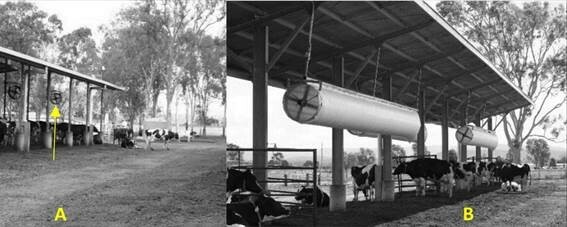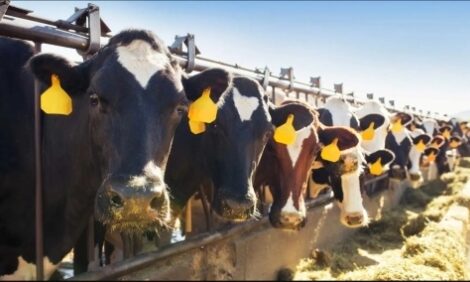



Day-plus-night cooling strategies provide powerful, cost-effective option against heat stress for dairy
Journal of Dairy Science study on cooling strategies for cows housed outdoors, including a novel outdoor use of ducted air systemsHot weather can have a big impact on dairy cattle health, well-being, and overall milk production for a herd. Dairy producers use a variety of effective cooling strategies to prevent heat stress including shade, fans, sprinklers, or a combination of all of these measures—and there is an increasing trend of having these strategies running 24 hours per day, versus only during the hottest parts of the day.
In a recent study appearing in the Journal of Dairy Science, researchers from The University of Queensland demonstrated the effectiveness of extending cooling strategies for dairy cows throughout the day and night, including how these strategies could be applied to outdoor herds with a more limited physical infrastructure.
“We know logically that dairy cows should be able to dissipate body heat better at night when the ambient temperature is lower than during the day, and beef feedlot studies have suggested that nighttime heat load reduction is critical for the animals to cope with periods of heat stress,” said the study's lead investigator, John B. Gaughan, PhD, of the School of Agriculture and Food Sustainability, The University of Queensland, Gatton, Australia. “But much of the published work on cooling strategies for dairy cows has focused on cows housed in barns or feedlots, with few studies of cows that are largely pasture based or managed on a feedpad—which is a confined yarded area allowing for regular feeding of the whole herd.”
Gaughan and his team set out to fill this gap. They investigated the impacts of adding nighttime cooling in addition to daytime cooling on the milk yield, rumen temperature, and well-being of an outdoor herd exposed to high summer temperatures. They focused on 120 postpartum Holstein-Friesian cows housed on a feedpad. The herd was split into two groups of 60 cows and given two separate cooling treatments over a period of 106 days.
- The daytime cooling group was cooled with overhead sprinklers and fans while in the dairy holding yard, plus ducted air blowing onto cows during milking, shade and fans at the feedpad, and a shaded loafing area.
- The enhanced day-plus-night cooling group received the same treatment plus thorough wetting—via a shower array—as they exited the dairy, plus ducted fan-forced air blowing onto the cows at night.
“This study is, to our knowledge, the first to investigate the potential of using ducted air as a means of cooling cows in an open pen environment overnight,” explained Gaughan.

The team monitored rumen temperatures using a radio-transmitting bolus at 10-minute intervals throughout the study, along with cow activity, panting score, dry matter intake, and overall milk yield. Over the duration of the study, cows in the enhanced cooling group produced more milk and had lower rumen temperatures and panting scores compared with the cows receiving just daytime cooling. Throughout the study, the enhanced cooling group cows also spent more time lying down than the daytime cooling cows.
“The combination of the shower array and the ducted air systems had a beneficial effect on milk production and cow welfare,” said Gaughan, “And, critically, is a cost-effective strategy for producers to consider with outdoor herds managed on a feedpad.”
The cost of the ducted system used in the study was approximately AU$31,500 but produced AU$21,308 AUD of additional milk income, meaning that 67.7% of the installation cost was recovered over the first summer.
“Over time, this kind of enhanced day-plus-night cooling system could provide powerful benefits for outdoor herds, from increased production and profits to boosted cow well-being,” he said.


